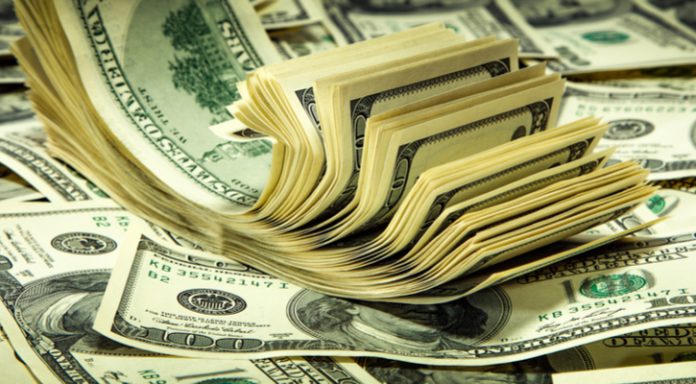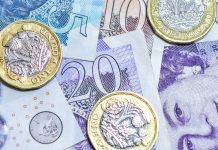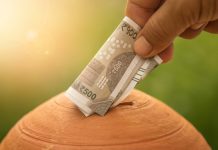The pound ended the week 0.8% higher versus the dollar, mainly thanks to a weaker dollar on Friday. Friday saw the dollar drop 0.6% against the pound, pushing the pound US dollar exchange rate to a high of US$1.4106, its strongest level in a week.
| What do these figures mean? |
|---|
|
When measuring the value of a pair of currencies, one set equals 1 unit and the other shows the current equivalent. As the market moves, the amount will vary from minute to minute. For example, it could be written: 1 GBP = 1.28934 USD Here, £1 is equivalent to approximately $1.29. This specifically measures the pound’s worth against the dollar. If the US dollar amount increases in this pairing, it’s positive for the pound. Or, if you were looking at it the other way around: 1 USD = 0.77786 GBP In this example, $1 is equivalent to approximately £0.78. This measures the US dollar’s worth versus the British pound. If the sterling number gets larger, it’s good news for the dollar. |
The pound performed reasonably well across the previous week, despite disappointing PMI’S. Both UK construction sector activity and dominant service sector activity experienced a sharp slowdown in March owing to extreme weather conditions. The late, heavy snowfall disrupted construction activity sending the sector into contraction for the month, meanwhile service sector operations dropped to the lowest level since the Brexit referendum.
Some investors feared that these weak pmi readings could encourage the Bank of England to hold fire on any interest rate rise in May, given the weakness in the economy. However, the fact that the pound actually rose against its peers, points to a greater number of investors still optimistic that the central will hike next month.
| Why do raised interest rates boost a currency’s value? |
|---|
| Interest rates are key to understanding exchange rate movements. Those who have large sums of money to invest want the highest return on their investments. Higher interest rate environments tend to offer higher yields. So, if the interest rate or at least the interest rate expectation of a country is relatively higher compared to another, then it attracts more foreign capital investment. Large corporations and investors need local currency to invest. More local currency used then boosts the demand of that currency, pushing the value higher. |
The UK economic calendar is fairly light again this week. However, there are several appearances by BoE policymakers which will be watched closely as investors attempt to gauge the probability of a Spring rate hike.
Dollar Dips on Soft NFP
The dollar managed remain resilient across most of the previous week despite fluctuating trade war fears. However, the weak US jobs report and news of further sanctions on Russia pulled the dollar lower at the end of the week.
The highly anticipated non-farm payroll numbers were weaker than investors and analysts had been expecting. There were only 103,000 new jobs created in US in March, well below the 198,000 analysts had predicted. Furthermore, the unemployment rate remained at 4.1% instead of falling to 4% as predicted by analysts. These disappointments outweighed the fact that average earnings climbed marginally higher from 2.6% in February to 2.7% in March.
This data will not have boosted trader’s expectations of aggressive interest rate hiking from the Fed. However, the fact that there are still two months to go until the next expected hike means that there are still two more labour market reports to be released. Therefore, this one didn’t cause too much turmoil despite the softer levels.
| How does the non-farm payroll (NFP) affect the US dollar? |
|---|
| It works like this, when there is low unemployment and high job creation, the demand for workers increases. As demand for workers goes up, wages for those workers also go up. Which means the workers are now taking home more money to spend on cars, houses or in the shops. As a result, demand for goods and services also increase, pushing the prices of the good and services higher. That’s also known as inflation. When inflation moves higher, central banks are more likely to raise interest rates, which then pushes up the currency’s worth. |
|
This article was initially published on TransferWise.com from the same author. The content at Currency Live is the sole opinion of the authors and in no way reflects the views of TransferWise Inc. |





